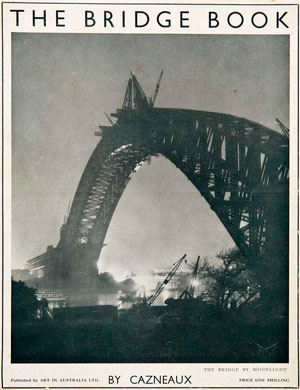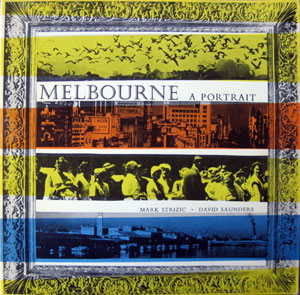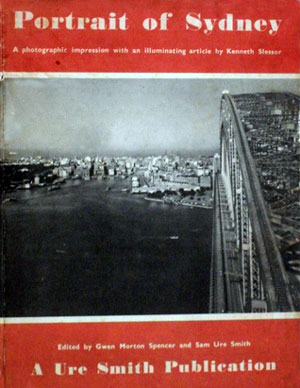Australian PhotoTexts 1926–1966, Eric Riddler 1993
Based on the original thesis submitted as part of the requirement of the Masters of Arts - University of Sydney.
This is the 2021 online verson of Eric Riddler's 1993 thesis.
For this 2021 version extra images and links have been added to the text that align with photographs/topics being mentioned.
Introduction to this thesis | table of contents | 1926-1966 chronology of photo-books
Chapter 1 | Chapter 2 | Chapter 3 | Chapter 4 | Chapter 5 | Chapter 6 | Chapter 7 | Chapter 8 | Conclusion
INTRODUCTION
The twentieth century has seen photography become an important factor in world communication. What had emerged during the nineteenth century as a scientific process had become a widely available asset. At the end of the twentieth century, with the photograph being updated from its long held print on paper format, the concept of the collectible 'fine print' or 'vintage print' has arisen.
Photography as a fine art had emerged in the closing decades of the nineteenth century, with the pictorialist school creating impressionist imitations but the actual interpretation of an unmanipulated photographic image as a work of art came during the middle of this century.
The basis of the photograph as art work has its roots in the recording of the past. Fine art style investment in photography in Australia tends towards the older images of known photographers rather than their recent work. The irony is that many valuable photographs were originally taken for mass-produced books, their appearance on a gallery wall removed from the original context.
The participation of Australia's major photographers in the publishing industry between 1925 and 1965 is a part of photography practice in Australia that has been mentioned only briefly in histories of the industry.1
Publications for tourism, commemoration, immigration or just a patriotic need for promotion were produced using images by many of the nation's most important photographers. Some contained collections of photo-essay style images while others were anthologies intended to promote photography itself. Books such as these can be classed as 'phototexts'.
Phototexts are books that incorporate photography, especially by respected photographers, as a vital, if not exclusive, component. It is important to explore the way in which these books portray the public image of Australia.
In documenting Australian photographic history, writers often choose to portray a history of individual photographers and images, then to group them into schools and eras. This is partly explained by the tendency of photographers in Australia to organise themselves into such groups.
This type of chronology is problematic, insofar as altering the original context of images, such as the images appearing in the publications to be discussed, to a footnote or provenance. A photograph which appears in a book as an illustration of modern urban life in the 1930s may reappear fifty years later in an anthology of nostalgia or for its aesthetic appeal. The aesthetic appeal may have been second to its content when selected for publication but when seen in a frame in a gallery, it becomes the essence of the image's overall appeal.
While a copy of Dupain's work in one of Ziegler's Soul of A City books may be displayed in a glass cabinet beside framed photographs, the viewer is denied the chance to turn the pages to become aware of just how many images made it into the book, and how many are out-takes that have come to the gallery wall through chance reprinting.
Geoffrey Batchen has discussed the difference between Dupain's Sunbather in the 1948 Ure Smith anthology and the Sunbather which has become the definitive Dupain image.2 It would appear that the modern version was not printed until the 1970s when the negative was selected, thirty years after the photographs were taken, as the better of the images.
There is an element of contention when dealing with phototexts as the creation of an individual author. The idea behind the book may vary from their commission through compilation and editing to their publication. It is subsequently common to find these books relegated to footnotes in photographic histories, if they appear at all. For instance, very little of Dupain's massive output for Oswald Ziegler appears in his biographies and David Moore's work for Ziegler is almost forgotten.
The period in question covers several decades in Australian history. The use of the aesthetic avant garde photographers for these books began in the 'Roaring Twenties'. The idea was mainly for a readership of quality magazines, especially those of Sydney Ure Smith.3
By the end of the 1930s there was, due to several centenaries and sesqui-centenaries, a mood of nationalistic self promotion. Throughout the 1930s and 1940s the books tended to ignore the depths of the Depression or the effects of Second World War. After the War the emphasis changed to one of external promotion, with the need to encourage migrants into Australia and for individual areas to benefit from the New Australians' skills (existing or potential). During the 1950s the comfortable image of the Nation under Prime Minister Menzies is perpetuated.
The call for settlement and investment came to be accompanied by historical ties. By the 1960s migration was less important and the later books discussed here are either aimed at the World Tourist or, like the books of the 1920s, an audience looking for fine photographic illustration. Moreover, after having been aimed at a mature readership for many years, these books began to portray the vibrant youth who typify the culture of the decade.
Certain publishers dominated the genre. Sydney Ure Smith's Art in Australia Limited pioneered the use of Cazneaux's work in these books as a result of Cazneaux's contribution to The Home and Art in Australia. Oswald Ziegler followed his father's footsteps into the production of illustrated advertising brochures, eventually using the Nation's top designers and photographers for books far removed from the picture-postcard images of South Australia that were his seminal work of the late 1920s.
Angus and Robertson contributed to the genre, especially in Frank Hurley's Camera Study series, beginning with Sydney, a Camera Study in 1948. After 1956 Hurley's work was published by John Sands.
Whether it is considered significant today or not, the phototext was important to many photographers. Cazneaux had given up studio practice due to ill health and was kept in the industry through Sydney Ure Smith's patronage. Ure Smith again was responsible for Max Dupain's emergence, although it was Ziegler who published his first book, Soul of a City. Following family tradition, Sam Ure Smith, Sydney Ure Smith's son, used some of David Moore's early work, amongst other photographers, in 1950's Portrait of Sydney.
Frank Hurley's Camera Studies were a way for the explorer-photographer to continue his travels at a time when his skills as an explorer and war photographer were no longer called for. Melbourne, a Portrait was an opportunity for German-bom Mark Strizic to present an intimate view of the City as seen by an immigrant.
The main factors in the analysis of the phototexts produced between the 1926 photographic salon in Sydney and the posthumous 1966 edition of Frank Hurley's Australia, a Camera Study are as follows:
Firstly, the changing aesthetic values of creative photography, from the closing days of the pictorialists, through the heyday of modernism to the development of documentary.
Secondly, the people involved in the production of the books, the main publishers and photographers and..
Finally the main subjects of the books themselves, Australia as a nation, the major cities as modem metropoli and the aspiring provincial centres.
notes:
- e.g in Anne Marie Willis's Picturing Australia, Angus and Robertson, 1988, there are only a few phototexts incorporated in Willis's argument, notably Harold Cazneaux's Sydney Surfing, 1929 and Oswald Ziegler's Australian Photography 1947.
- Geoff Batchen, 'Creative Actuality, The Photography of Max Dupain', Art Monthly Australia 45, November 1991.
- Especially Art in Australia, begun in 1916 and Ttie Home, begun in 1920. Sydney Ure Smith ran these magazines, and others, until 1938. After falling out with the Fairfax group, who owned the magazines, Ure Smith began Australia National JournalAn 1939, which continued until the late 1940s.
NEXT >>> chapter 1 of the main thesis | 1926-1966 chronology of photo-books
More on Oswald Zeigler \ main Papers Page \ photo-web contents page / photo-web
|


